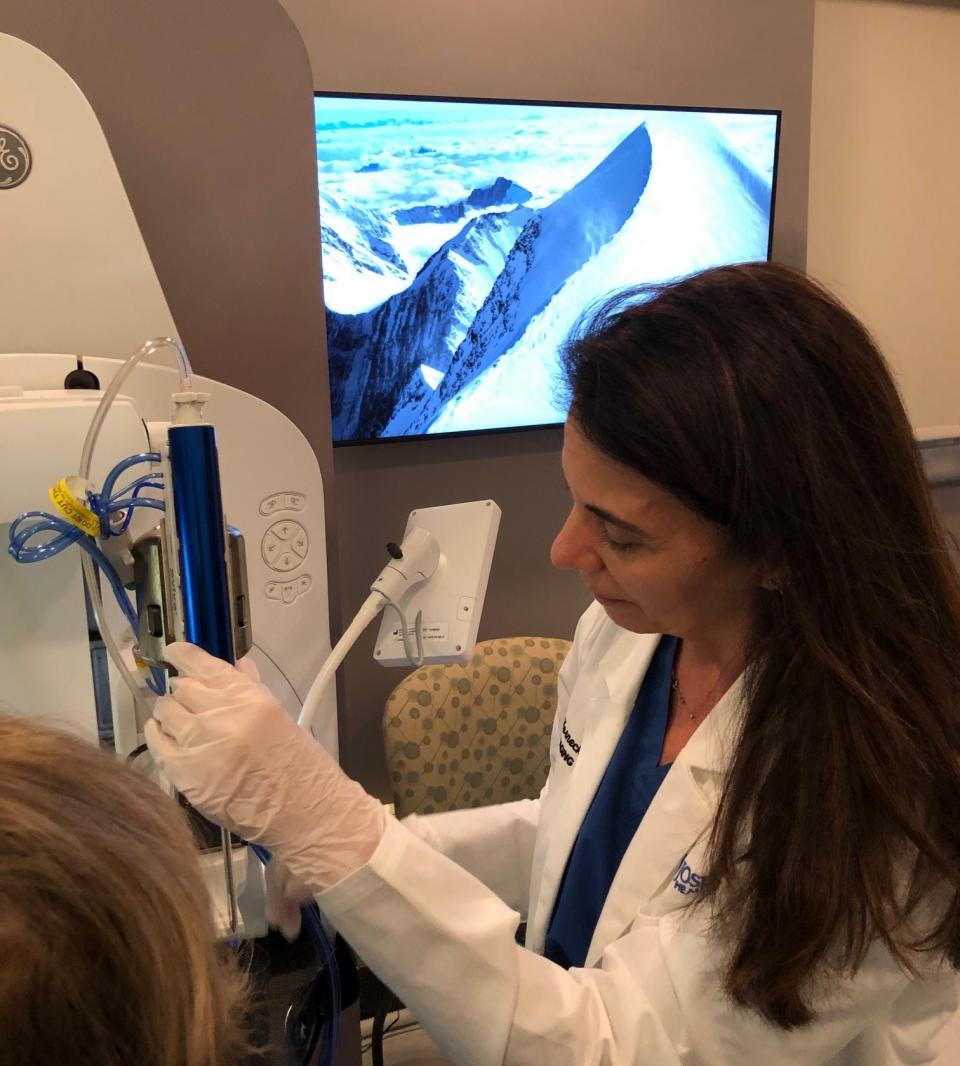ON THE BRIGHT SIDE
Since their introduction in the 1960s, mammography machines have exemplified how medical imaging can improve patient outcomes: The sooner doctors catch breast cancer, the sooner they can treat it. But even after patients receive a mammogram — an X-ray image of the breast — labeled with “suspicious findings,” they haven’t always been able to expect a timely breast cancer diagnosis. Doctors have lacked a tool for quickly performing a biopsy, which is a sampling of abnormal tissue. Instead, patients might have to schedule another appointment for an ultrasound or an MRI, adding to their anxiety at an already uncertain time. But a quicker path may be in view. After years of work, GE Healthcare developed Serena Bright, an imaging technology that aims to make it easier for doctors to conduct breast biopsies where a mammogram has shown cause for concern — and may provide patients a faster, more comfortable way to get a diagnosis sooner.
A quicker turnaround: Serena Bright works in tandem with GE Healthcare’s Senographe Pristina mammography system, which can use a contrast medium to highlight areas of concern in the breast, in an approach called contrast-enhanced spectral mammography, or CESM. Serena Bright pairs CESM with advanced software that robotically guides a biopsy needle to a precise point within a patient’s breast to remove a sample of suspicious tissue. The procedure takes 15 minutes, typically in familiar surroundings and with a clinician whom the patient knows. GE announced the Serena Bright technology last year, and it’s just been made commercially available for clinicians in the U.S.
Learn more here.
NETWORK NEWS
With 12 hospitals across Pennsylvania and New Jersey, St. Luke’s University Health Network has grown into a bustling regional provider. Fast growth over the last few years, however, has presented challenges to the network in terms of standardizing care and streamlining workflows, particularly in the provider’s vascular, radiology and echocardiography departments. But that’s changing. St. Luke’s has just announced that it is partnering with GE Healthcare, which will install 76 state-of-the-art ultrasound systems before the end of 2020. Valued at $11 million, it’s the largest single-order ultrasound deal GE has ever made in the U.S.
In sync: The heart of the new setup will be GE Healthcare’s LOGIQ E10 for general imaging and Vivid E95 for echocardiography ultrasound machines. Both systems connect to an automated reporting and post-processing system called Viewpoint, as well as Vscan, a handheld ultrasound device that will be used in the cardiology department. The new equipment can produce better image quality faster, which in turn can lead to quicker diagnoses and treatment for patients. Viewpoint alone is expected to save St. Luke’s $300,000 a year in radiology efficiency gains. GE Healthcare has agreed to continue upgrading the systems for the next four years, meaning that — according to Everett Cunningham, president and CEO of GE Healthcare in the U.S. and Canada — St. Luke’s “can maintain its fleet with the latest technology developments.”
Learn more about the deal here.
“If you have everybody in the room that’s had the same experience, you won’t get better answers." Hear from GE’s chief diversity officer, Mike Barber, on why inclusion and diversity better equip GE to build a world that works — for everyone.
— QUOTE OF THE DAY —
“The consistency of ultrasound systems across the network will allow accurate replication of patient studies, which would otherwise be challenging when working with different brands. Through our partnership with GE Healthcare, we will maintain this state-of-the-art technology for years to come.”
— Dr. Hal L. Folander, senior vice president, chief medical strategy officer and network chairman of the department of radiology at St. Luke’s
Quote: GE Reports. Images: GE Healthcare.






